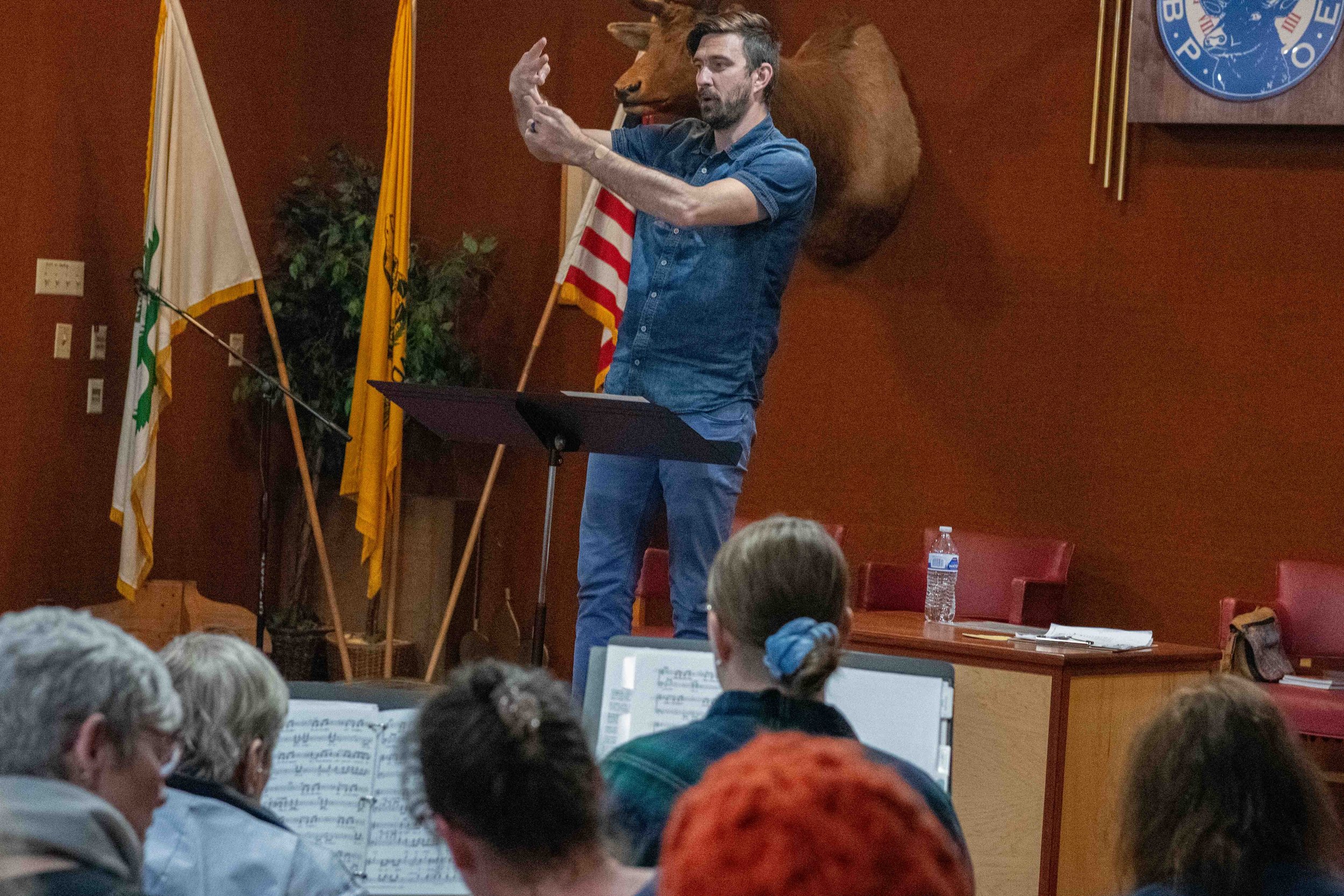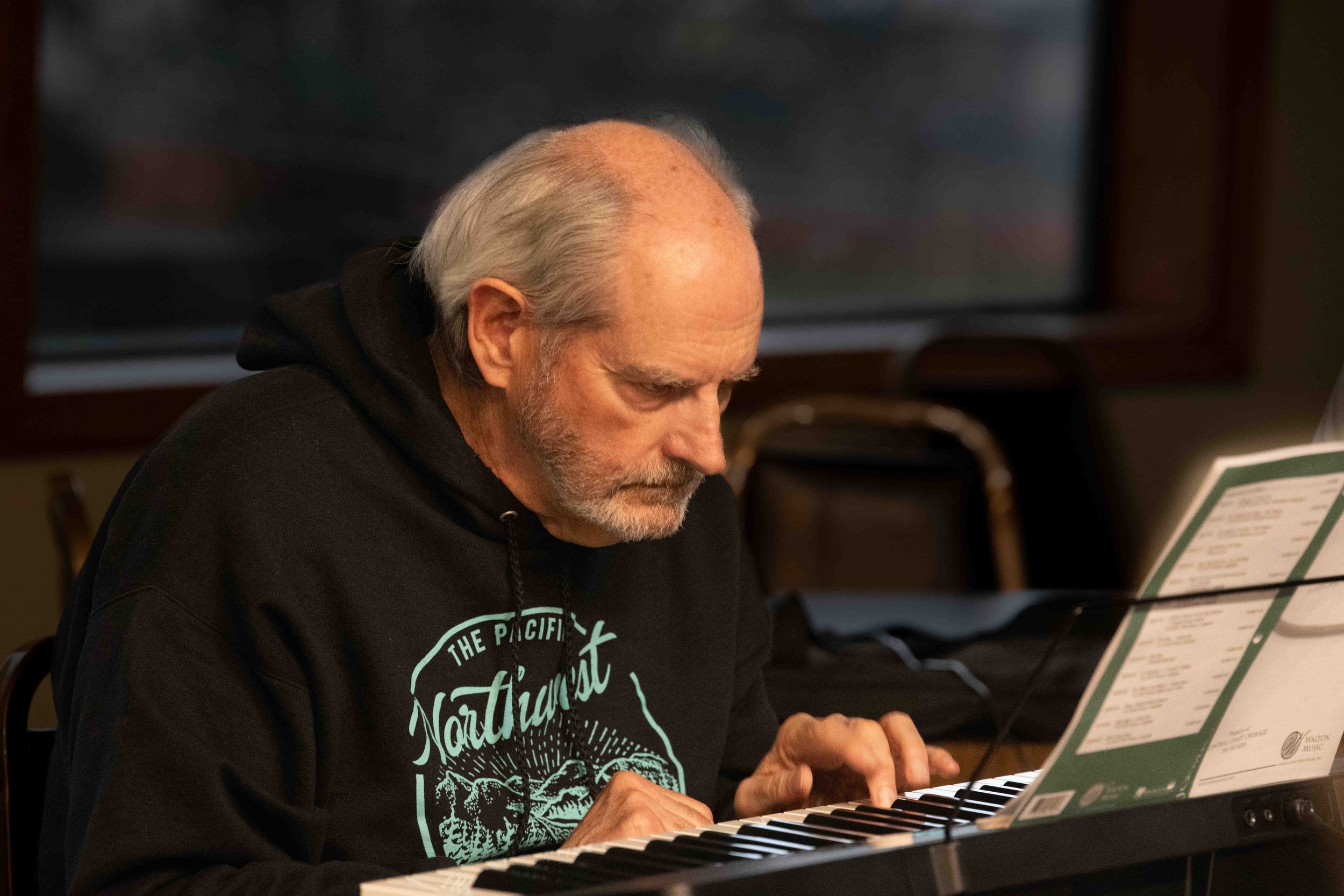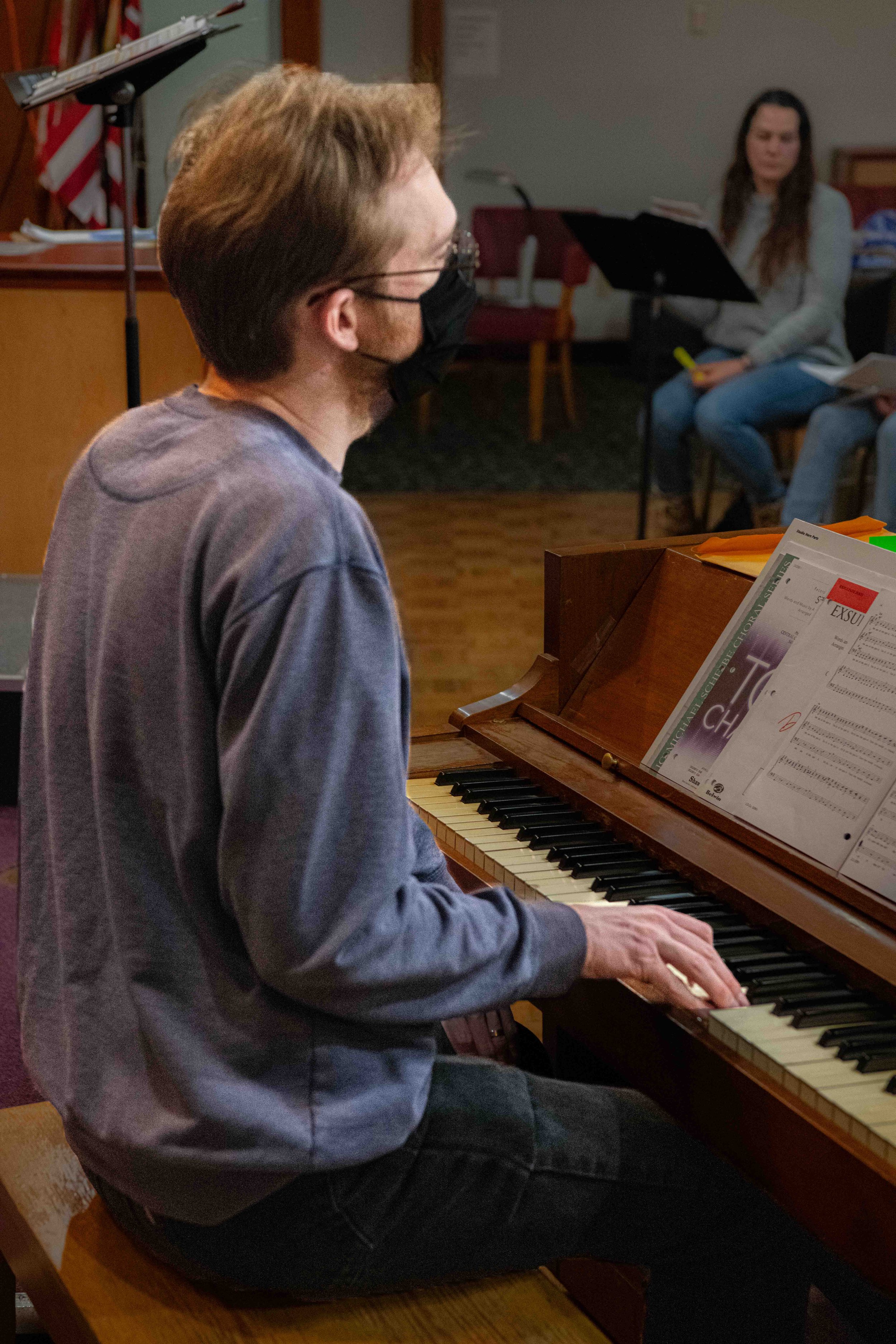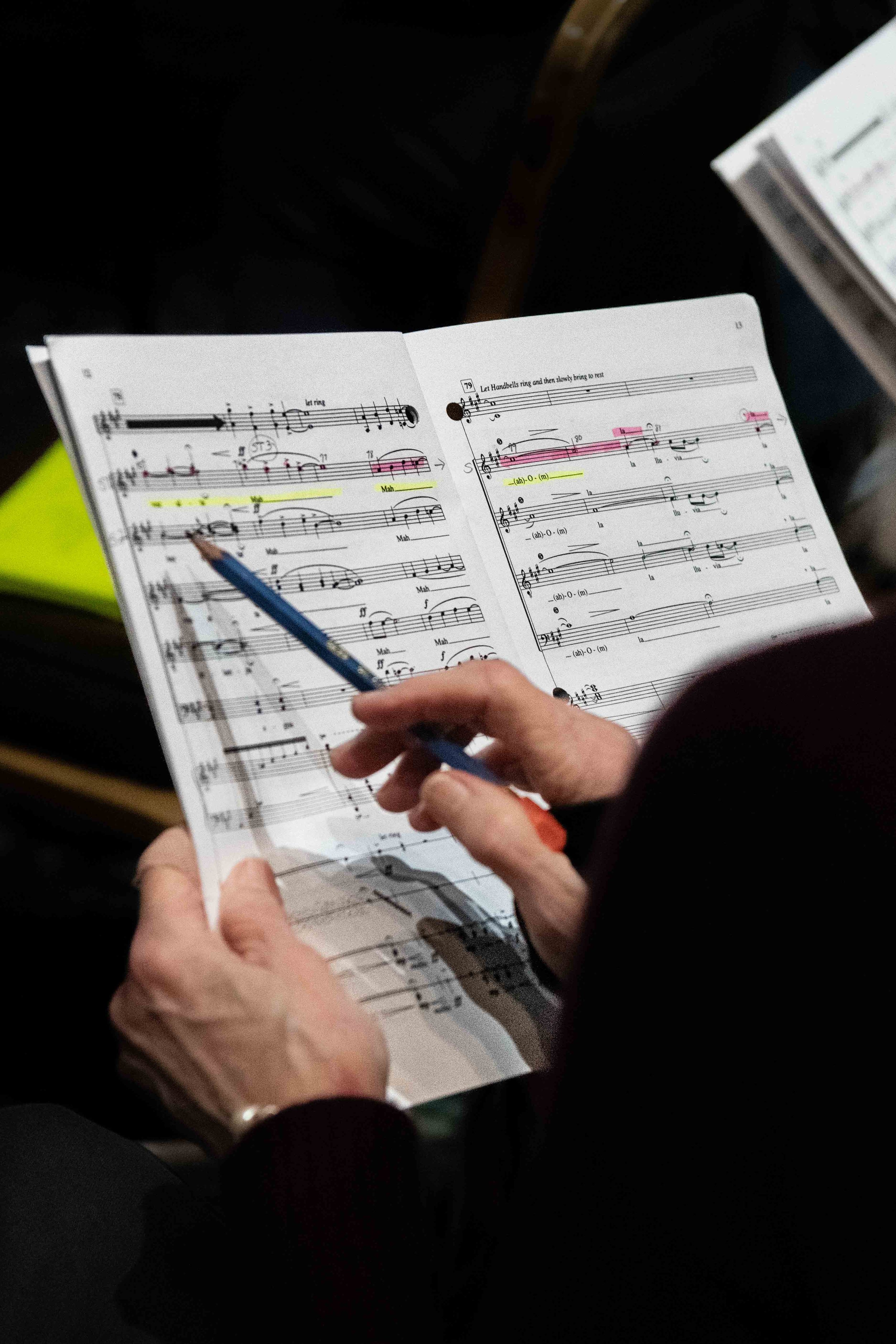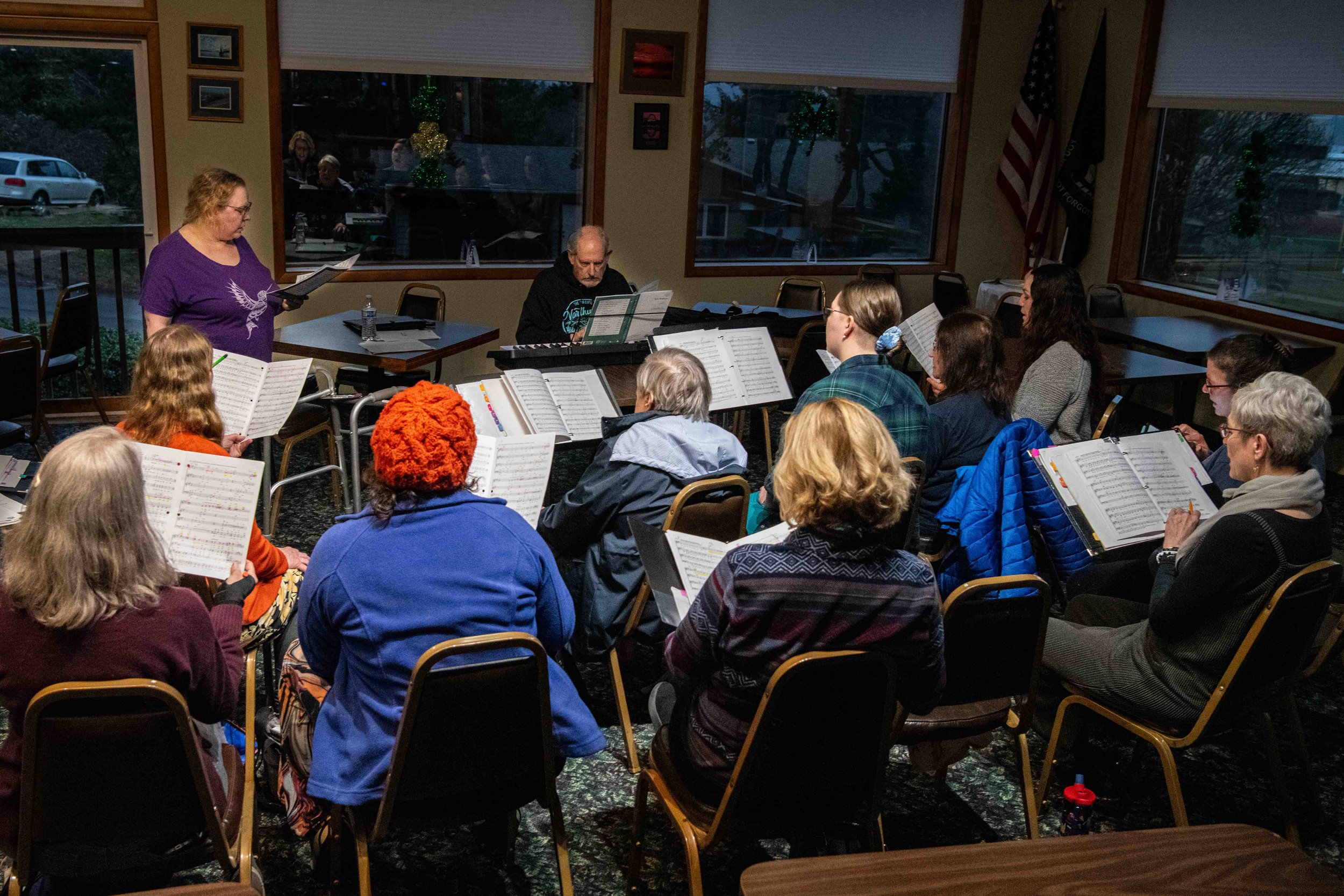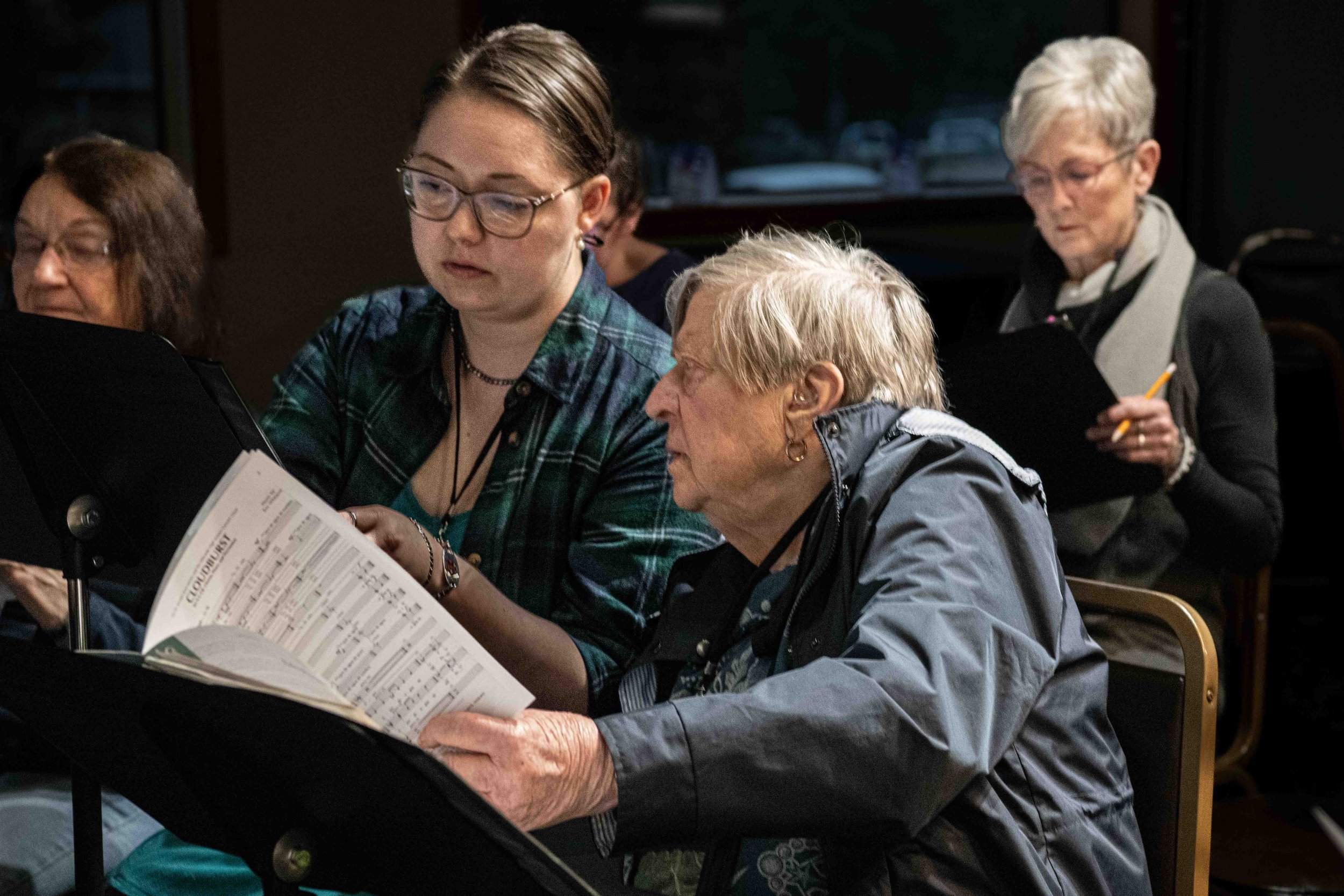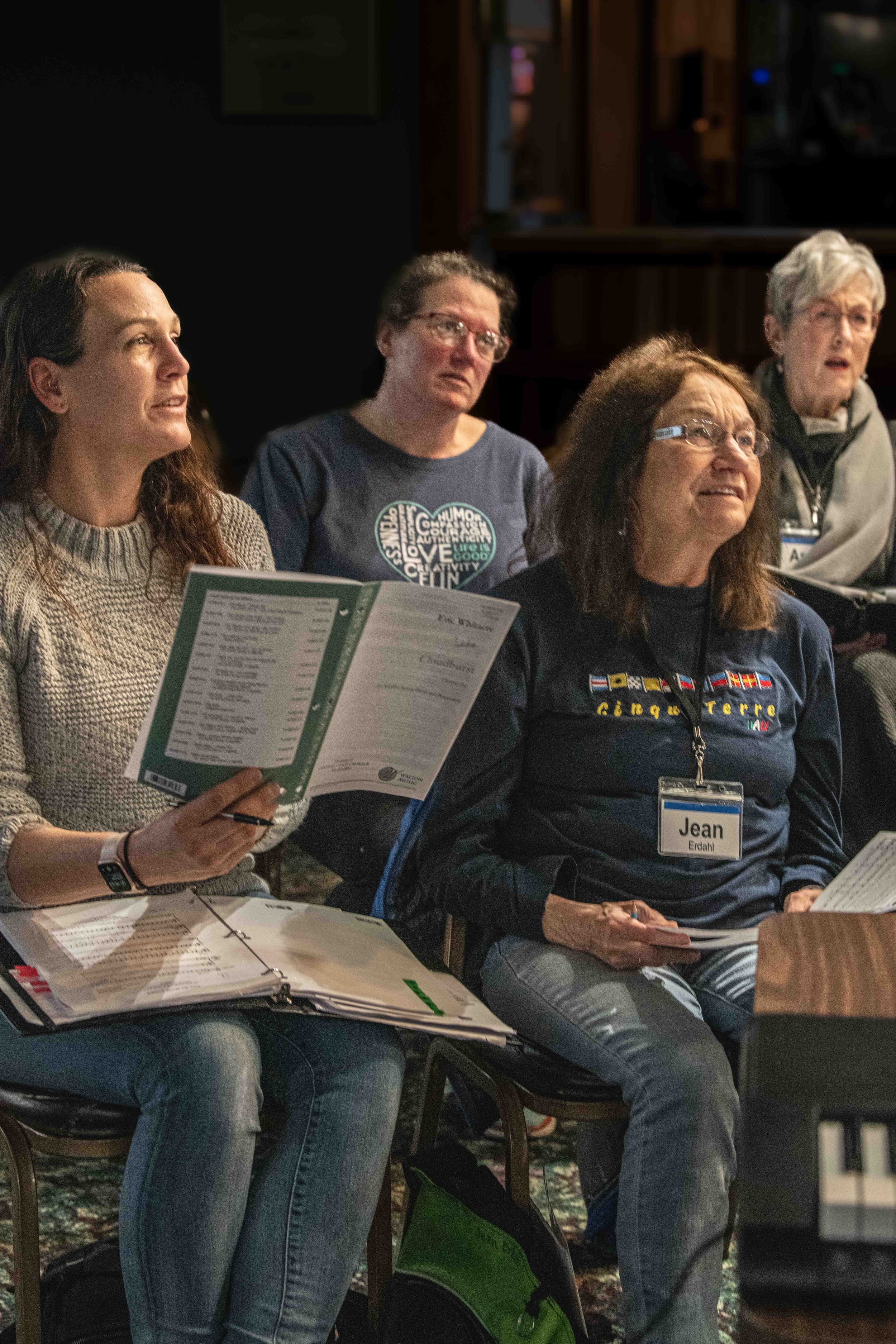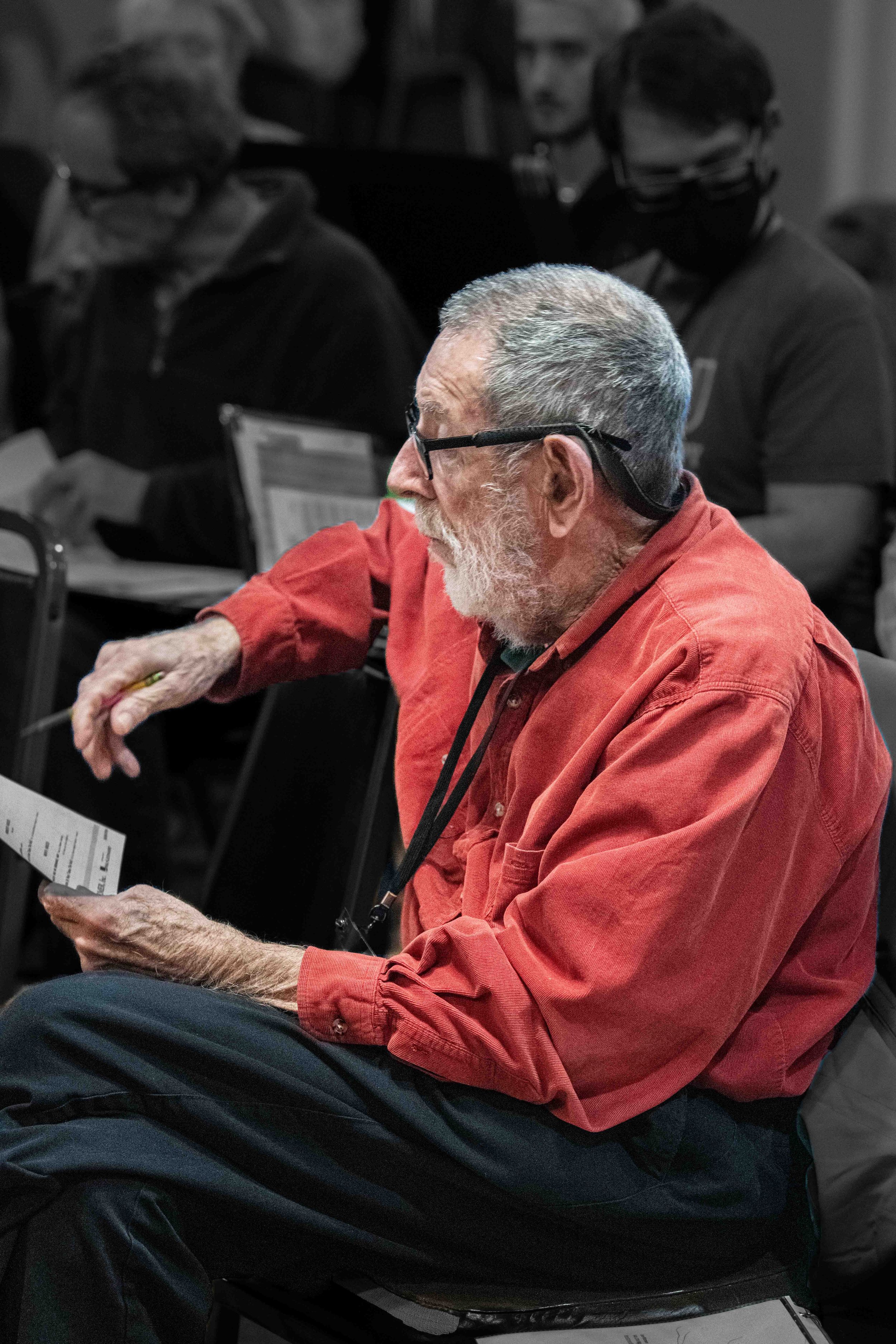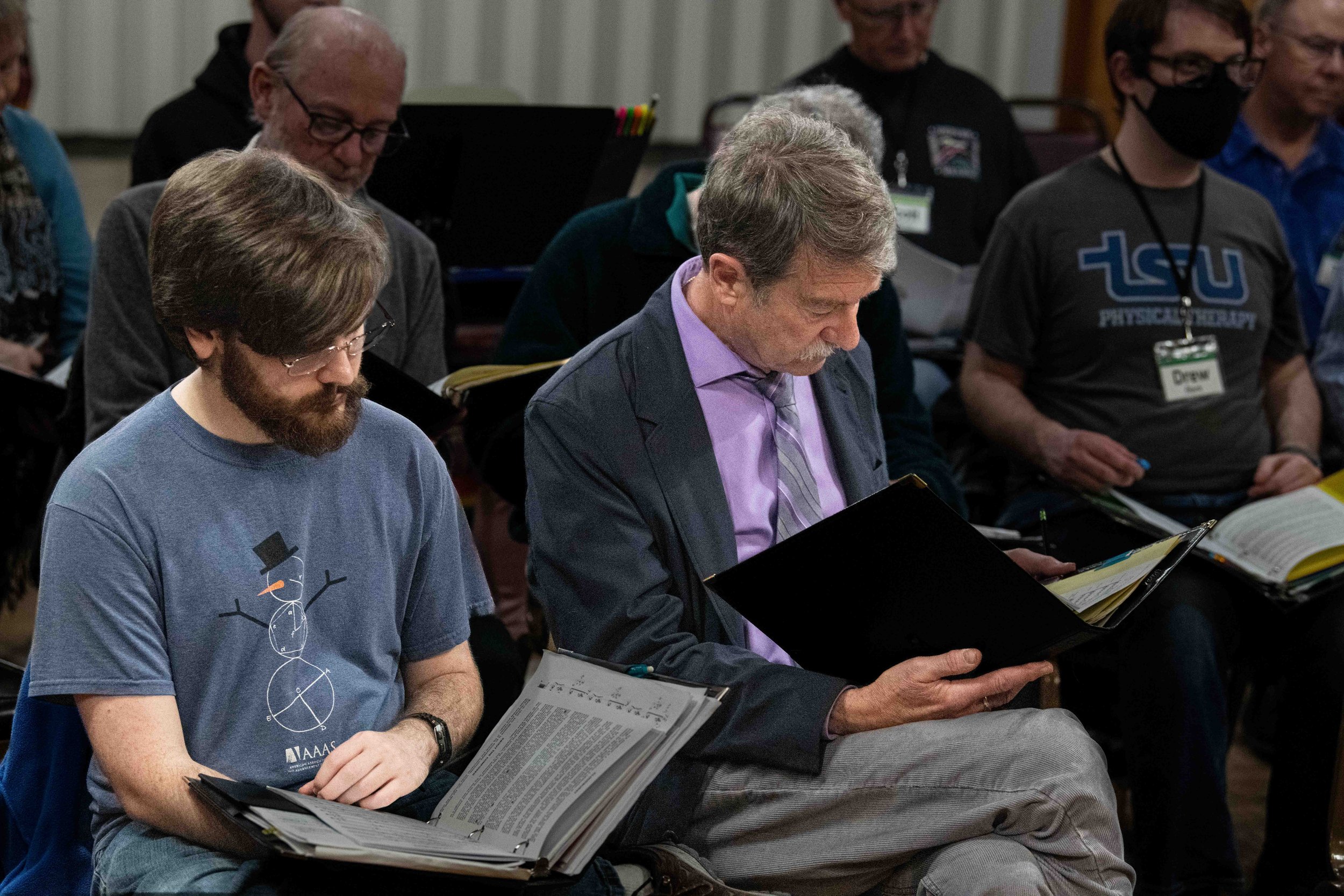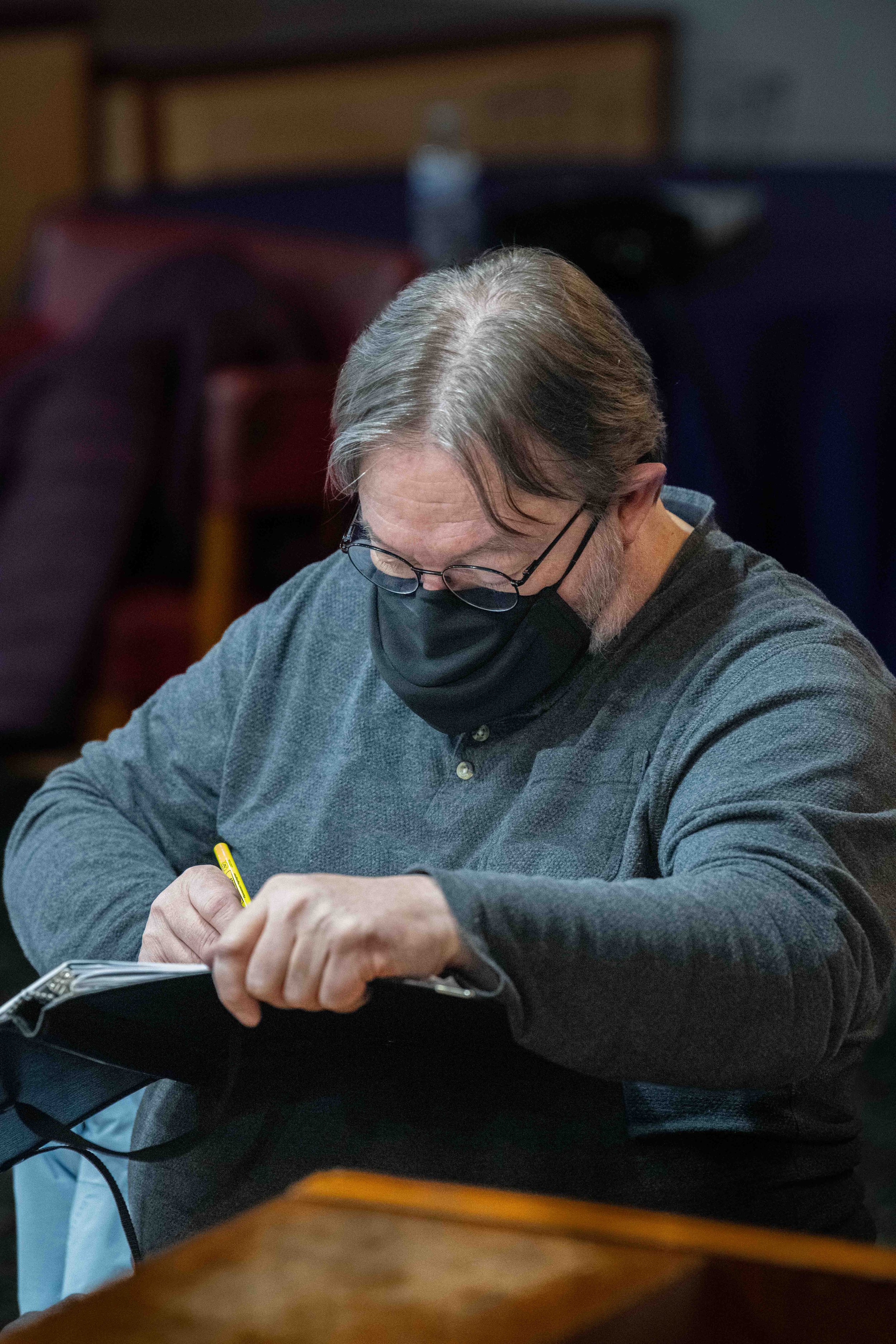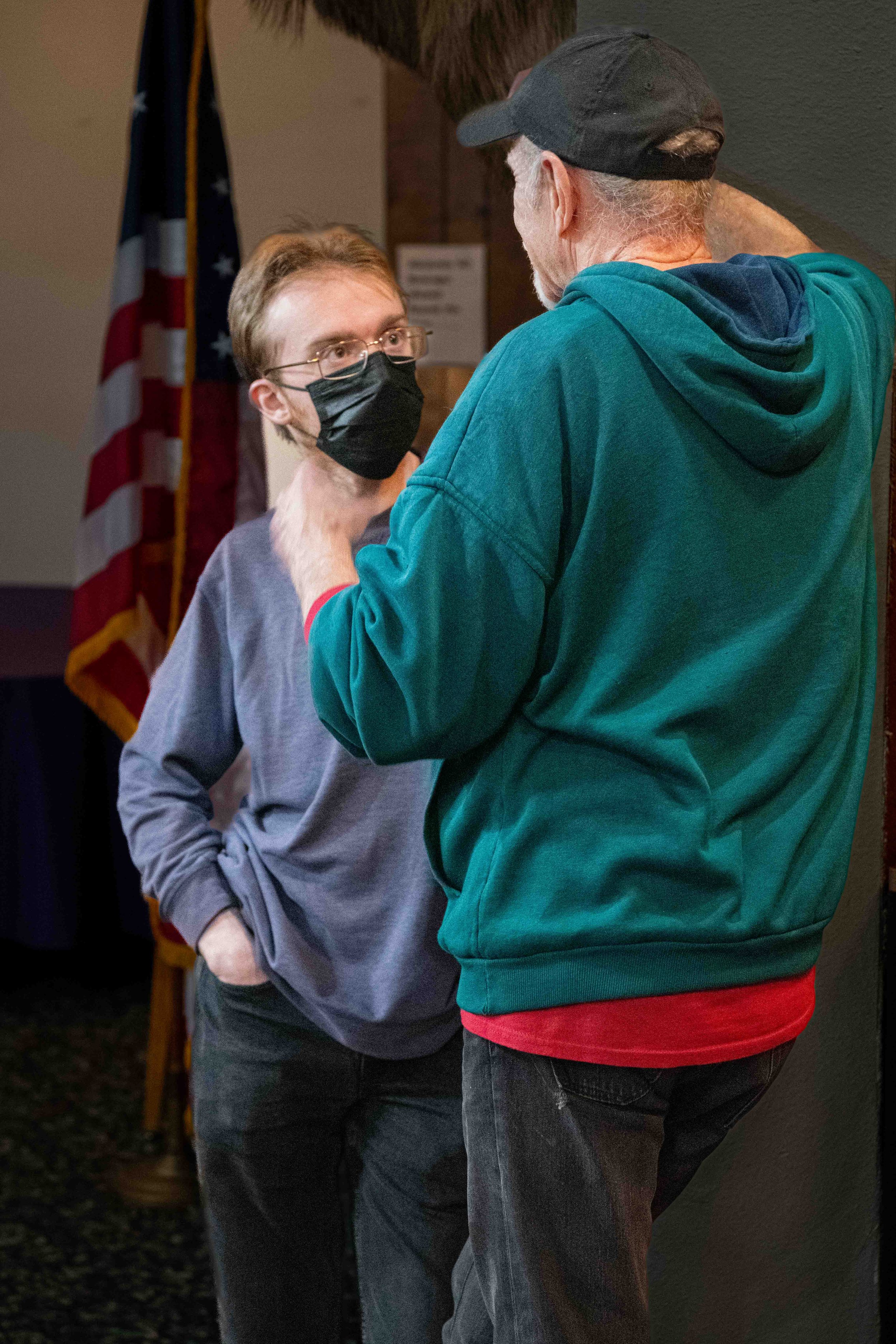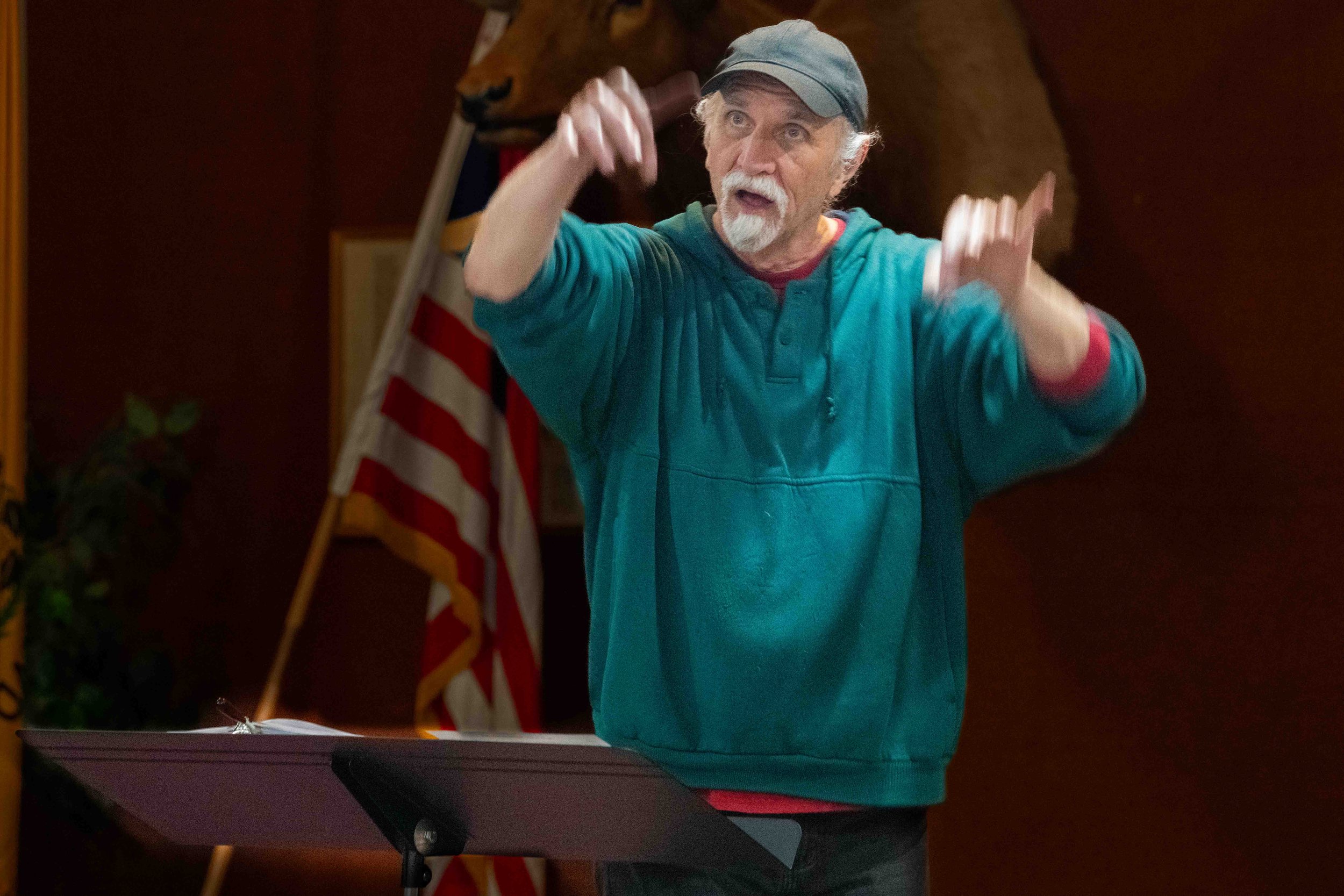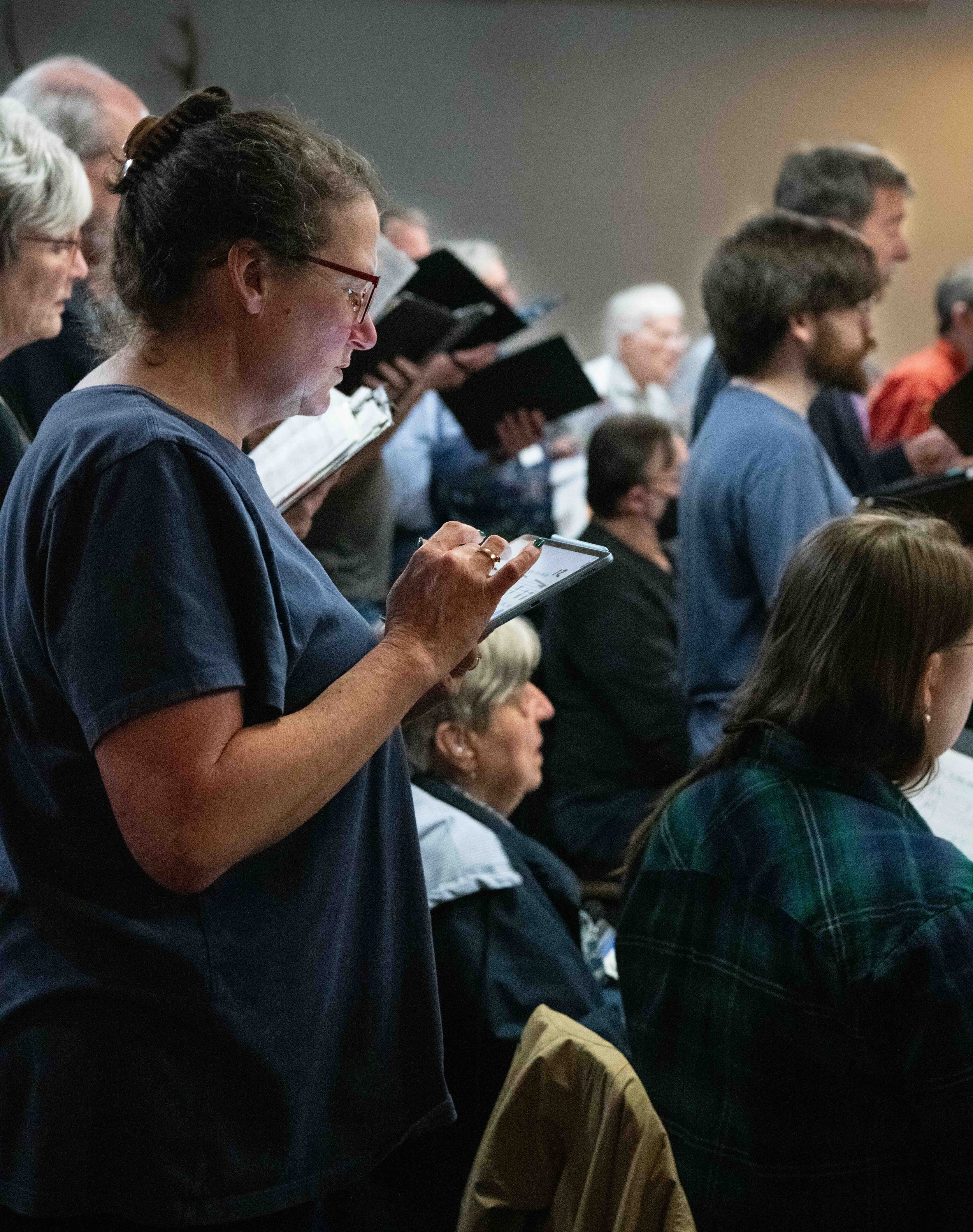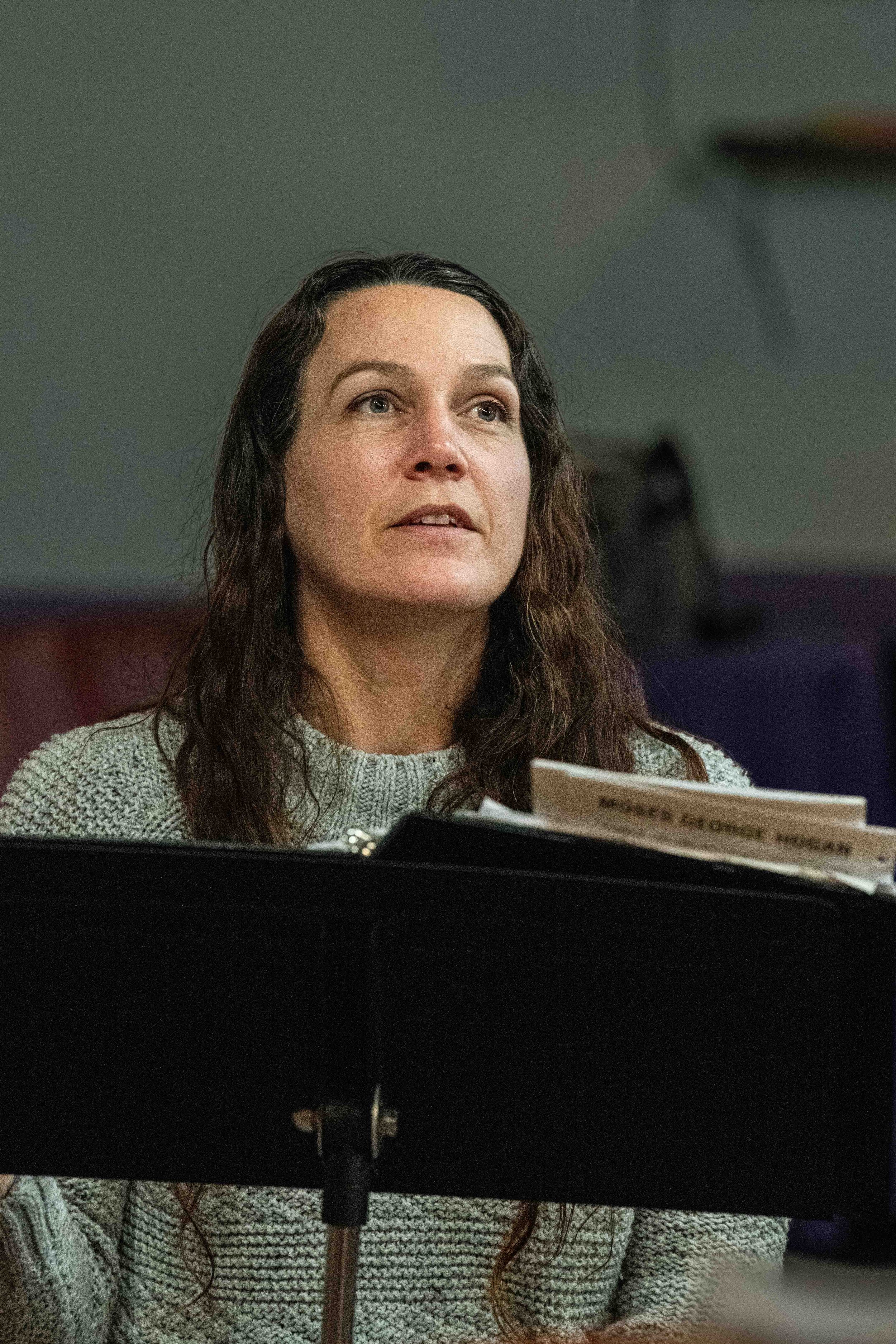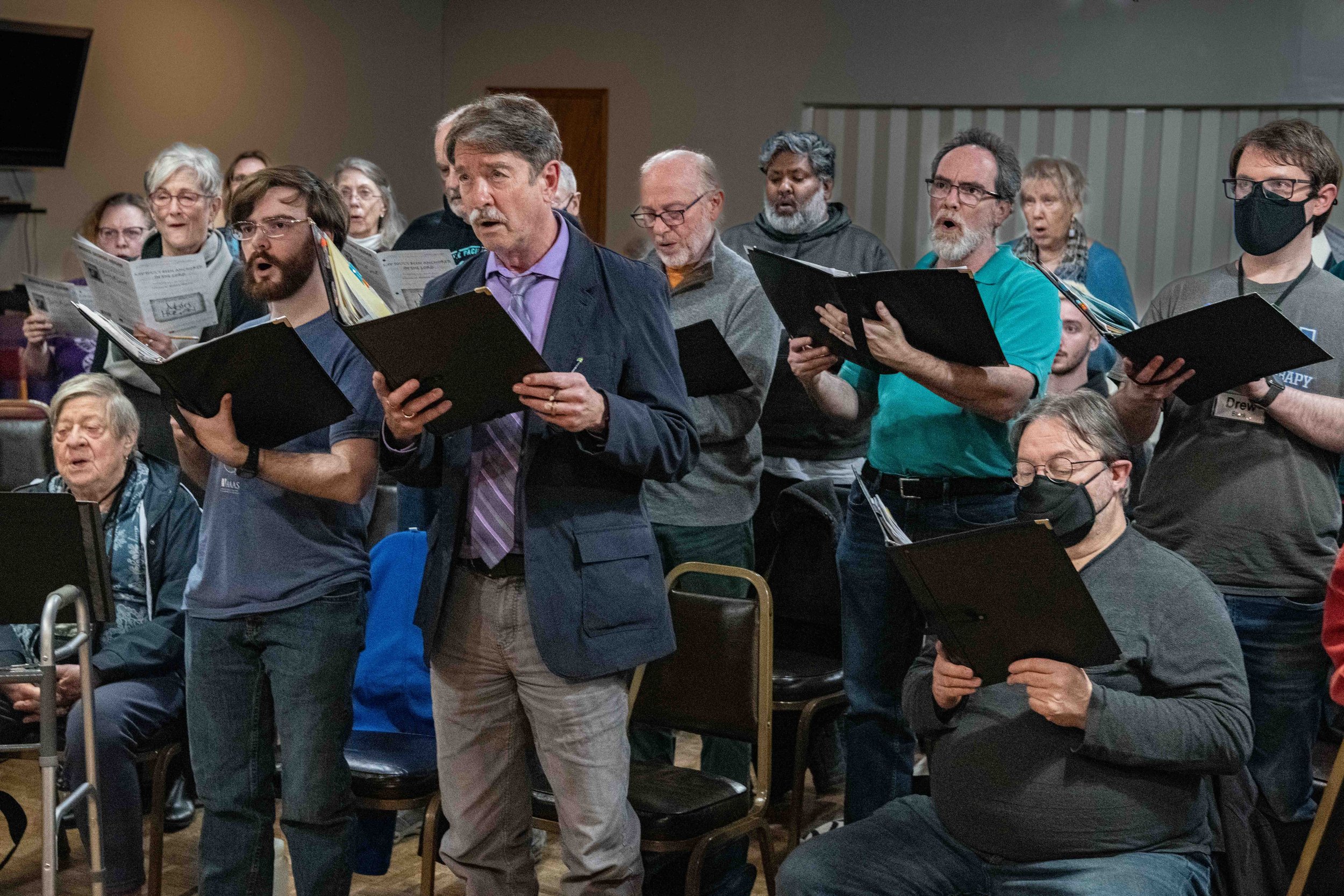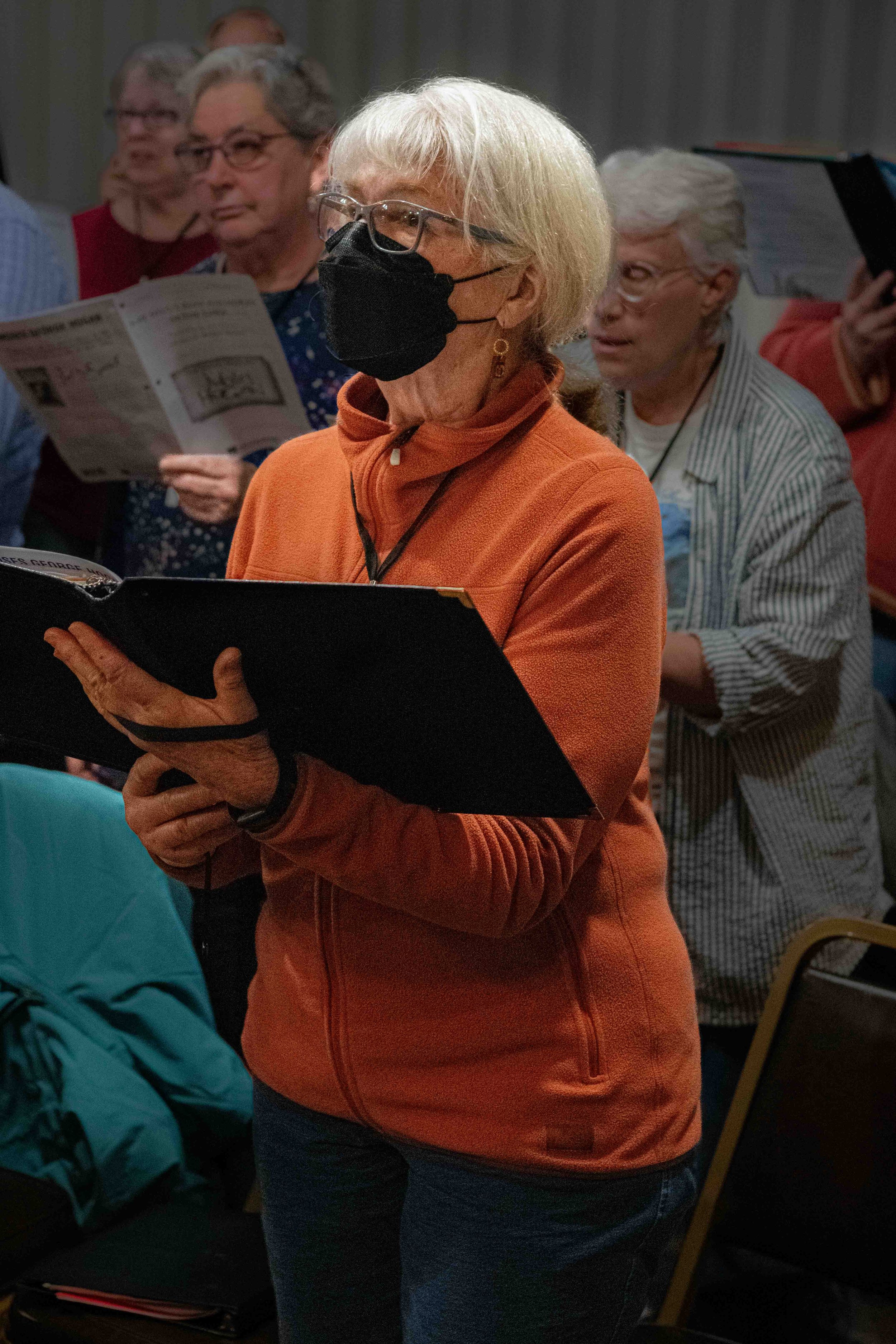This Is Who We Are—Spring 2024
Coastal Voices (CV) is a dedicated group of 50 (or so) members who make music together. All of us love to sing of course—-at home, in the shower, while gardening, along with favorite recordings, to our children, in the car, coming out of the grocery with a pop song earworm—-so many opportunities to warble or belt out a tune on our own. Joining CV gives us a whole new way to let that vocal exuberance out while we work together to produce a beautiful blend of 50 (or so) disparate voices. We prepared for our May 2024 concert series, “Spring Homage,” at the Elks Lodge in Newport, transforming the dining and game rooms into small group practice spaces. In the large ballroom we strung up extra overhead lights and set up chairs for 50 (or so) and filled the space with live music.
Where to start? With an Artistic Director, Rhodd Caldwell, dedicated to finding a way for all singers to succeed in this group endeavor, no matter what previous experience (or lack thereof) they bring with them. Rhodd has gathered a team of collaborators to help him realize his vision.
Rhodd directs.
Assistant Director Raleigh Bartholomew helps with warm-ups and conducting and geniality. Choral expert Vern Sanders “voices” the choir by moving the singers in each section around until their voices lock into resonanace and provides the perspective of long experience. Accompanist Milo Gramaans supplies the musical framework upon which everyone depends—-the correct starting pitch followed by all the other correct notes.
Raleigh demonstrates. Vern listens. Milo plays.
Who we are as individual members depends on vocal range. The choir is divided into four sections: soprano, alto, tenor and bass…high to low. These designations work well for many compositions. Each section is further subdivided into I and II components, refining the vocal range sorting process. These divisions allow the choir to tackle more complex works requiring up to eight parts.
We all have our own ways of marking our music so that we can find our way through the maze. Rhodd encourages us to use different colored markers for various reminders. Some selections seem relatively easy to decipher with notes spread out across the staff. Some selections have notes jam-packed on the page and require aid and comfort from section leaders and Rhodd and Raleigh and Milo in order to decipher the puzzle.
This is who we are—-a group of singers who help each other find the path to enlightenment for each song we learn.
Rehearsal Part 1
Rehearsal time is split between sectionals and full choir practice times. During the first portion, Rhodd combines two sections in a joint session and sends the other two into separate rooms for their work. There are different challenges for every voice in every piece of choral music. These sectional run-throughs allow intense work on difficult alto passages in a song, for example, without taking up valuable group time. The tenors can tune-up their high notes, the basses can rumble their way to perfection, and the sopranos can mellow out their soaring upper registers so that when the entire choir assembles after a break, everyone has a good grasp of the rhythms and harmonies specific to their particular part.
The sopranos work hard for section leader Donna while Vern helps out by accompanying them (while missing his own tenor sectional.)
Meanwhile in another area, alto section leader Margaret is drilling her singers with help from Raleigh (who is skipping his bass sectional)
Rehearsals are most effective when there are two leaders—-one conducting and one at a keyboard. This usually requires that someone misses their own sectional in order to lend a hand with another group. For example, Vern and Raleigh are often called upon to make this sacrifice.
This is who we are—singers helping other singers as we strive to get it right.
Rhodd and Milo work with the tenors and basses in a joint sectional in the ballroom.
Milo, as collaborative accompanist, has to watch both the music and Rhodd and also be prepared to turn on a dime from (in this case) tenor to bass lines, separately and together. He also functions as another set of ears and can offer corrections and point out troublesome passages for Rhodd to smooth over.
This is who we are—pianist, director and singers collaboratng in a musical endeavor.
This is who we are at Break Time.
No talking during practice! So now we visit with each other—-share a laugh or a story. “How have you been?” “I need help with this little bit.” “Guess what happened to me!” Rhodd and Milo plot their next moves. Some of use thie moments to update our scores, or just take a breath. Get a drink of water. Ten minutes and the baton goes up. Back to work—now with all of us. What will those things we’ve been working on in sectionals sound like when combined with the other voices?
Rehearsal Part 2
Following a brief re-centering exercise, the process of amalgamation begins. This is the where the magic and mystery start to happen. No matter how many times you have sung your part along with a practice video or audio download in the privacy of your home or car, no matter how many times you have gone over your part in a sectional session. you are never prepared for the sensation of singing your part with 49 (or so) other people. The air in the room vibrates. It is louder than you expected. You are part of the group and the group is you! And then Rhodd stops it all…. and has corrections and remarks to offer. “Milo—go back to measure 5 please…”
And so it goes. Stop. Start. The pursuit of perfection. It is a long haul. Move on to a different piece. This one is even harder—-it is written with parts for eight different voices. Start. Stop. “Milo—could we hear all the women’s parts from measure 25?” Start. Stop. A bass pipes up—the women sounded great just there. Everyone straightens up at this glimmer of positivity. Another selection is brought forward for trial and error. This one has a tricky bit for the lower voices. “Tenors and basses at measure 34—under tempo please Milo.” Start. Stop. Finally the women clap at a sweet harmony achieved by the bass/tenor sections. Full chorus rehearsal time is frustrating and fruitful, and dismaying and fulfillng, and hard and fun.
This is who we are. Individuals joining together to become a chorus. We are pursuing the thrill of being surrounded by music while making the music. We are matching our vowels and blendng our tones to produce clean unison and rich harmony. We are attending to our diction so that the words of the songs are as clear as the melodious sounds. We work hard and we work together. We have fun and joy. We are Coastal Voices.
Photo credit: Bob Christensen and Miriam Isenberg




